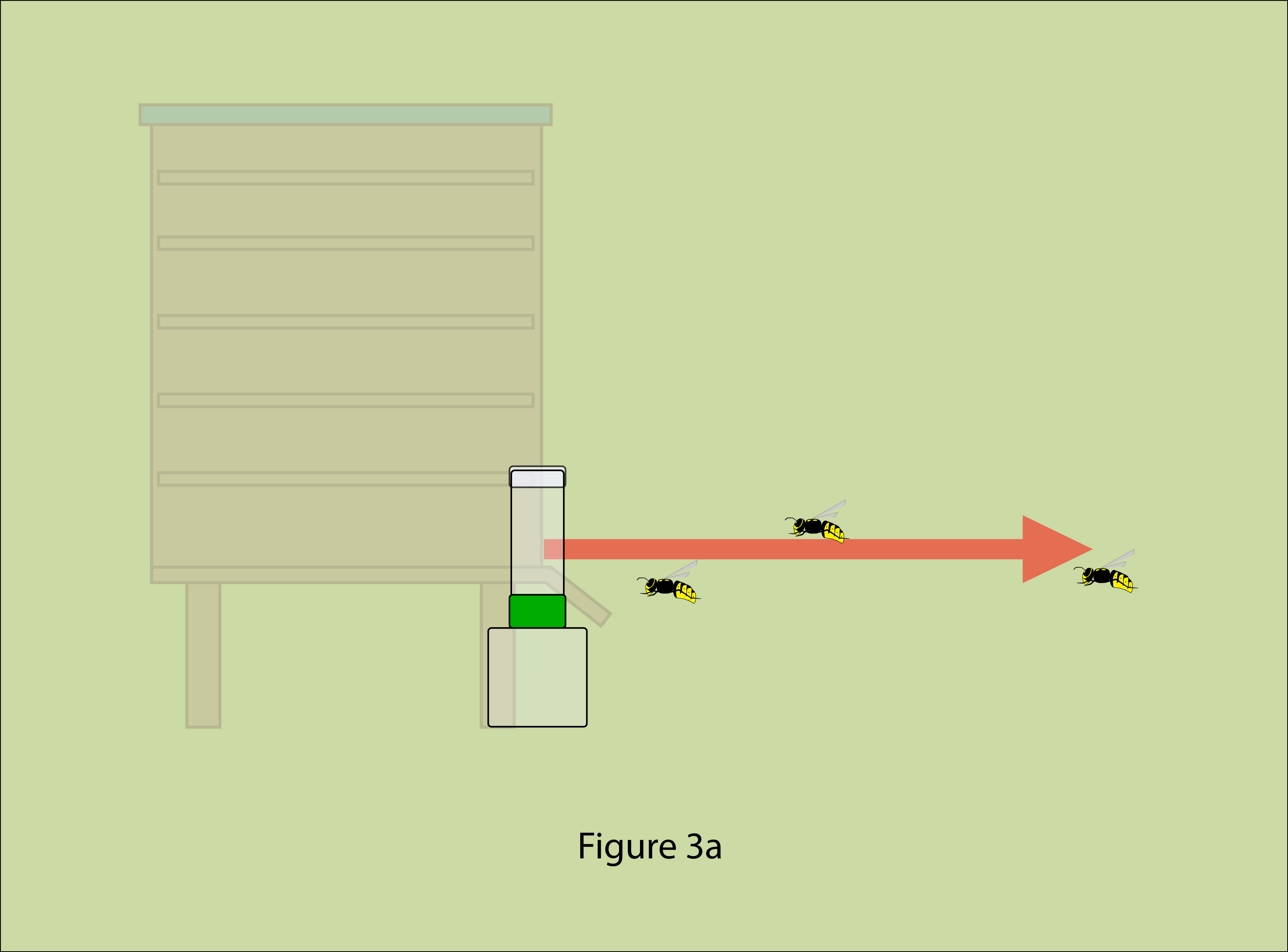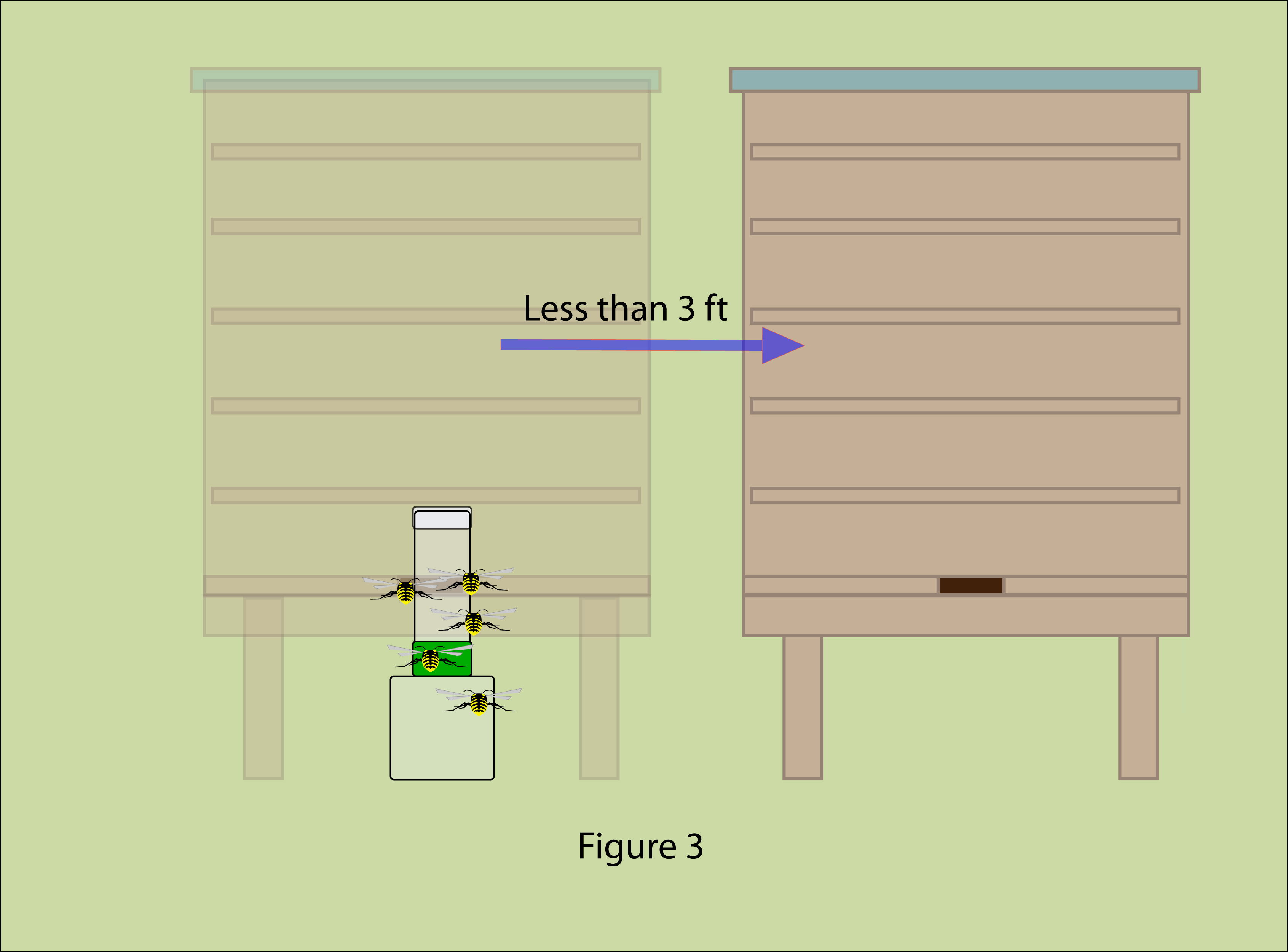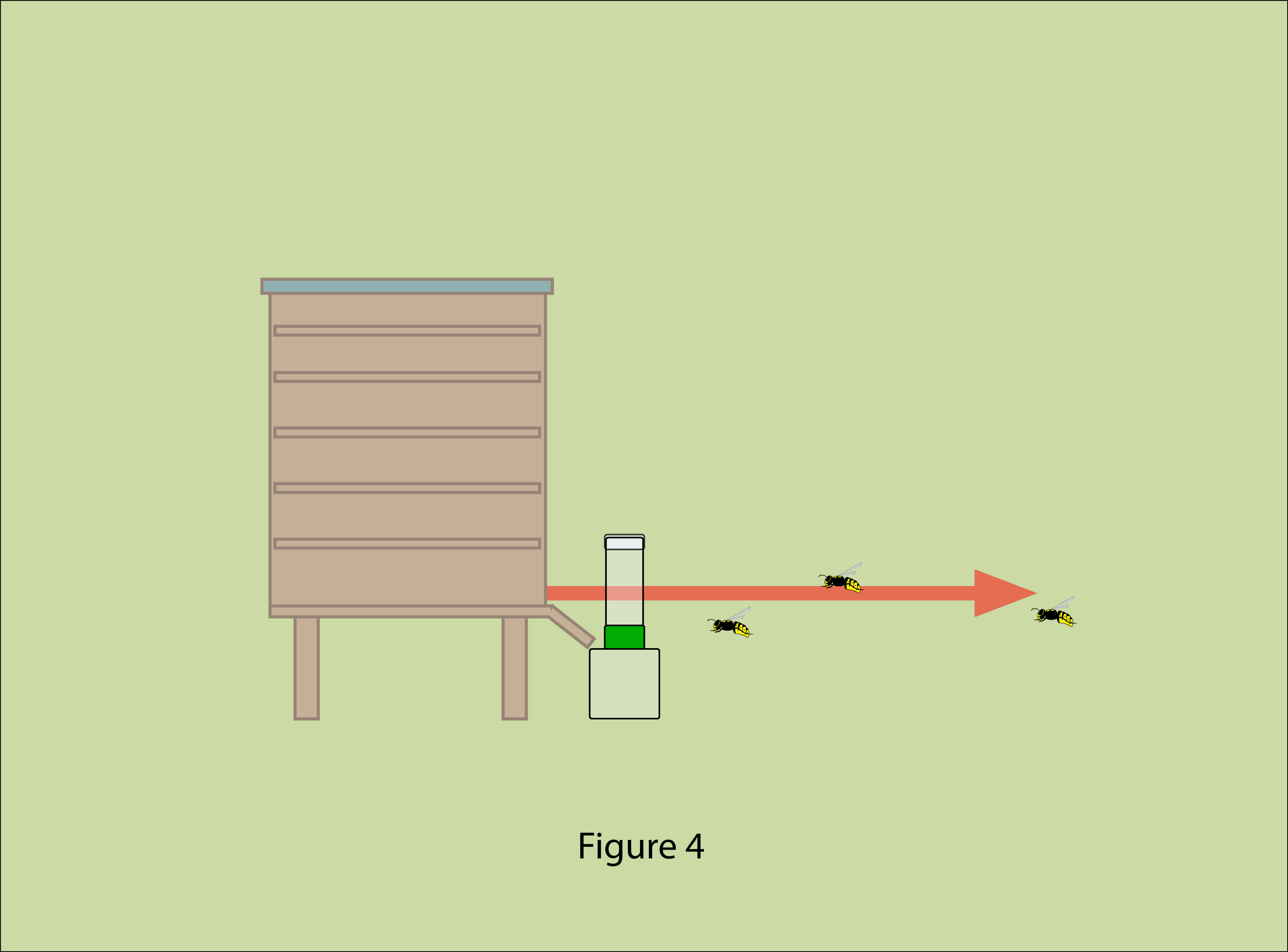WARNING: DO NOT SQUASH WASPS ON YOUR BEEHIVE – DOING SO PLACES YOUR BEEHIVE AT HEIGHTENED RISK
Frenzied feeding occurs when swarm feeding wasps are sent into a fury in response to the release of distress/alarm pheromone. One of the quickest ways to convert swarm feeding wasps into frenzied feeding wasps is to manually squash visiting wasps on the bee hive. As the wasps are squashed they emit distress pheromone which then contaminates the beehive and acts as a chemical beacon that attracts wasps that are within scenting distance (which depending on wind conditions can be several hundred yards if not a couple of miles). Beehives subjected to frenzied feeding are at critical risk of being overwhelmed and destroyed within a short space of time. Frenzied feeding therefore requires immediate action if the hive is to be saved.
Before attempting to save a hive threatened by frenzied feeding consideration should be given as to whether the hive is worth saving. It is quite possible that the hive may have been weakened through disease and its demise through wasp attack may be considered as nature’s way of quarantining and eradicating the disease causing the hive to fail. Thought should be given as to whether saving the hive might represent a health risk to other healthy beehives. It may be that the hive is saved from wasps only to succumb eventually to the disease that weakened the hive in the first place. The question has to be asked whether on failing the hive will then be robbed out by other bees so risking the transmission of the offending disease to other hives.
Distress/Alarm Pheromone
In frenzied feeding it is pointless trying to interrupt programmed feeding behaviour by simply moving the hive without first removing the distress/alarm pheromone that has contaminated the hive. Even if the hive is moved more than three miles away the distress/alarm pheromone will attract wasps residing in the new location and frenzied feeding will resume in short order.
The secret in dealing with frenzied feeding is getting rid of the pheromone. This can be achieved in one of two ways. Either the hive is washed with a solution of double strength soda crystals or the colony is transferred to a clean new hive. The two different methods provide different options for dealing with the frenzied feeding wasps.
Washing
Where the hive is washed with a solution of double strength soda crystals then this is done best at dusk. Once all the honeybees have returned, seal the hive and wash all external surfaces of the hive that may have been contaminated with distress pheromone. Particular attention must be paid around the entrance to the hive. Rinse the hive with fresh water. The hive must then be relocated preferably more than three miles away. If this is not possible then the hive should be moved less than three feet away (see figure 3 and figure 3a) but the hive should remain sealed for a few hours if not a whole day whilst wasp eradication is in progress.
At the same time that the hive is moved a primed WaspBane wasp trap must be placed in the exact same location that the hive occupied prior to being moved such the entrance flutes to the WaspBane wasp trap occupy the exact same location that was occupied by the hive entrance.
 In addition to deploying a WaspBane wasp trap in the vacated location of where the beehive entrance was it is also strongly recommended that a second WaspBane wasp trap be deployed to protect the entrance to the relocated hive using standard interception trapping as shown in figure 4.
In addition to deploying a WaspBane wasp trap in the vacated location of where the beehive entrance was it is also strongly recommended that a second WaspBane wasp trap be deployed to protect the entrance to the relocated hive using standard interception trapping as shown in figure 4.
Rehousing
As the name suggests this involves rehousing the honeybee colony into a fresh clean beehive. Rehousing offers an advantage in that the old hive can be used to distract frenzied feeding wasps by continuing to draw them to the distress/alarm pheromones contaminating the old hive. This method of dealing with frenzied feeding wasps relies on strictly following an ordered sequence of steps:
1. Place the new hive next to the old hive ready to receive the honeybee colony.
2. Prime a WaspBane wasp trap and deploy it at the entrance to the old beehive so that the entrance flutes to the WaspBane wasp trap are sited as closely as possible to the entrance of the old hive.
3. Block the entrance to the old hive. This is a critical step that must not be overlooked.
4. Transfer the honeybee colony to the new hive and then move the new hive away from the old hive a distance not exceeding three feet. Leave the entrance to the new hive open but monitor closely for wasp attack. Deploy a second primed WaspBane wasp trap at the entrance to the new hive.
5. Replace the cover to the old hive but leave it propped open to the rear of the hive to allow any remaining bees within the hive to escape.( Alternatively if the hive has a top entrance that was NOT previously in use then open the entrance and leave the cover fully closed). Leave the original entrance to the old hive sealed. This is critical to prevent re-entry of returning foraging honeybees.
6. The following day it is preferable to relocate the new hive more than three miles away from the old hive making sure to deploy a WaspBane wasp trap to protect it as described in section 4 above. The old hive should be left in place with the original entrance sealed until the frenzied feeding wasps have been dealt with by the WaspBane wasp trap.
Please note that if more than one entrance was in use in the old hive then each entrance must be handled as described above and must remain sealed during the wasp eradication process.
Please also note that these techniques may result in vast numbers of wasps being caught such that the safe capacity level of the WaspBane bait chamber may be exceeded. If this is the case than a new replacement bait chamber should be fitted to the WaspBane wasp trap.

 Follow
Follow

